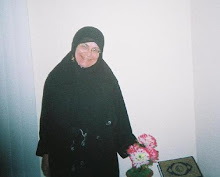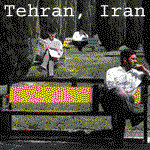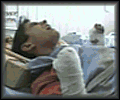Africa: Why the Next United States President Won't Mean a Thing to Afrika Unless
 29 September 2008
29 September 2008Dr. Kwame Osei
Many people of Afrikan descent are anticipating that if Barack Obama becomes the 44th President of the United States of America, the fortunes of Afrika will change. However, it does not matter one jot who wins the forthcoming US election unless US Foreign policy towards Afrika changes drastically.
A Case-study:
The G8 Summit held in June, pledged $6 billion dollars a year in so-called aid to Africa by 2006. The low figure caused an official of Oxfam to say "We're extremely disappointed by this wasted opportunity. They're offering peanuts to Africa and recycled peanuts at that."
In 1999, debt service payments from Africa, the poorest region in the world, to rich Western countries totaled $35.7 billion. African debt stands at a crippling $300 billion.
According to The Guardian (U.K.) "African leaders invited to the G8 gathering expressed deep disappointment that the plan did nothing to open western markets, cancel debts of the poorest countries or provide the financial aid needed to meet the U.N.'s targets for tackling global poverty by 2015."
Behind the shameful peanut throwing lurks a deadly Western policy towards Africa. The U.S. government which dominates the G8 has through the Pentagon, the CIA, the World Bank and the IMF, systematically demolished African economies, health and education sectors, and fueled eleven wars on the continent with arms transfers and military training.
This genocidal imperial strategy has killed more than ten million Africans and has allowed the U.S. and the West to attain Africa's abundant natural riches very cheaply.
Nearly 80% of the strategic minerals the U.S. requires are found in Africa including 90% of the world's cobalt, 90% of the platinum, 40% of the gold, 98% of the chromium, 64% of the manganese and one-third of the uranium.
These minerals are needed to make jet engines, mobile phones, lap-top computers, the digital-camera, cars, missiles, electronic components, iron and steel. Africa also accounts for 18% of U.S. oil imports as compared to 25% from the Persian Gulf, with Nigeria and Angola being the fifth largest and ninth largest exporters to the U.S. respectively.
Militarizing Africa
Africa is the most war-torn region in the world with armed conflicts going on in nine countries: Democratic Republic of Congo (DRC), Sudan, Burundi, Chad, Rwanda, Somalia, Uganda, Ethiopia/Eritrea, Congo-Brazzaville and Algeria. The long wars in Angola and Sierra Leone ended (for now) in April and March 2002 respectively.
The U.S. has provided arms and/or military training to participants in 9 of these 10 wars, the only exception being Algeria. During the 1990s, 32 African countries (out of 53) saw violent conflict.
According to William Hartung, co-author of "Deadly Legacy: U.S. Arms to Africa and the Congo War," a report released in 2000 by the New York-based World Policy Institute, the U.S. sent $1.5 billion dollars in arms and training to Africa during the Cold War years (1950-1989) and this "set the stage for the current round of conflicts in the region."
Hartung points out that "The military skills and equipment supplied by the U.S. are still being used by combatants in these wars." As "Deadly Legacy" explains, "many of the top U.S. clients of the Cold War-Liberia, Somalia, Sudan and Zaire (now DRC)" became riven by violence, instability and economic collapse during the 1990s (and still are).
Following the end of the Cold War, the Clinton Administration undertook "a wave of new military training programs in Africa." From 1991 to 1995, the U.S. gave military assistance to 50 countries in Africa out of a total of 53; during 1991-98, U.S. arms sales and military training to Africa totaled more than $227 million.
The U.S. has four different military training programs for Africa: International Military Education Training (IMET), Joint Combined Exchange Training (JCET), African Crisis Response Initiative (ACRI) and the African Center for Security Studies (ACSS).
Under IMET, the U.S. gave $7.9 million in outright grants to Sub-Saharan Africa in 1998, increasing it to $8.1 million in 1998 and $8.5 million in 2000. In contrast, South Asia got only $5.7 million, $5.6 million, and $5.8 million, respectively.
In 2000, the U.S. gave $8.1 million under ACRI to 39 African countries and U.S. Special Forces have trained 34 out of 53 African national militaries under JCET.
Congo
In the Democratic Republic of the Congo (DRC), the heart of Africa, U.S. proxies Uganda and Rwanda occupy the eastern half of the country and are looting its mineral resources and sending them to the West.
The DRC is the richest country in Africa holding the world's biggest copper, cobalt and cadmium deposits. The war started by Rwanda and Uganda against the Congolese government in 1998, has killed 2.5 million people and displaced 2.3 million. Oxfam called this war, "the world's biggest humanitarian disaster."
Angola, Zimbabwe and Namibia sent their armies to support the Congo government and Burundi joined the other side. Thus began "Africa's First World War" involving seven armies which has further wrecked a country crushed by more than a century of Western domination. The U.S. has given arms and/or military training to all seven armies.
Rwanda and Uganda are the U.S.' "staunchest allies in the region" and Washington backed their invasion of the Congo according to Human Rights Watch.
Uganda received $1.5 million in U.S. arms and military training in 1999 and Rwanda got $325,000 under IMET in 2000. U.S. Special Forces have trained the Rwandan Army in counterinsurgency, combat and psychological operations.
This included instructions about fighting in the Congo. To keep the war going, the U.S. has helped the other side too with Zimbabwe getting $1.4 million in U.S. military training in 2000 and Namibia $500,000.
Angola
Another U.S.-made disaster is the 27-year long civil war in Angola (Africa's longest-running war) which ended in April 2002; the conflict killed 500,000 people and shattered the country.
The U.N. has warned of a catastrophe in Angola, where half a million people face starvation (as a result of the war) and more than a million depend on food aid for survival. Thousands of people have died of hunger over the last few months, and more are dying every day.
According to the BBC, "It is the worst starvation to hit Southern Africa in over a decade." Three and a half million Angolans (a third of the population) have been displaced by the war and eight to fifteen million land mines cover Angola making agriculture hazardous.
As a result, fertile Angola has to import half its food requirements. There are 100,000 disabled land mine victims, 82% of Angolans live in poverty and a child dies of a preventable disease every three minutes. Like the Congo, Angola is rich in mineral wealth: it is Africa's second largest oil producer (after Nigeria) with some of the largest offshore oil deposits in the world, and its diamond output is worth about $800 million a year.
The civil war started with Angola's independence from Portugal in May 1975 when the left-wing Popular Movement for the Liberation of Angola (MPLA) took power and Washington launched a CIA covert operation in July 1975 to overthrow it.
The operation was the brainchild of Henry Kissinger who was then Secretary of State in the Ford Administration. The CIA at the time was led by George Bush Sr. The CIA plan included backing a South African invasion of Angola in October 1975 and support for Union for the Total Independence of Angola (UNITA), an opponent of the MPLA, led by the brutal Jonas Savimbi.
UNITA was an agent of the Portuguese colonial regime; its task was to destroy the MPLA, and it had received aid from apartheid South Africa whose invasion it joined. The U.S. asked for the South African invasion and helped Pretoria airlift men and materiel up to the front line so the latter could seize the capital Luanda and stop the MPLA from establishing itself as Angola's first independent government. Before South African forces could reach Luanda, however, Cuban troops landed there in November 1975 and beat back the apartheid army.
The CIA operation spent $31.7 million on arming UNITA and the South Africans before being shut down by Congress in 1976; U.S. aid to UNITA resumed in 1985 under the Reagan Administration and Savimbi received $250 million between 1986 and 1991. U.S. support for Savimbi reached a record $50 million in 1989 when George Bush Sr. became President.
As one observer put it, "Two military supply flights a day maintained a UNITA campaign that became increasingly brutal and destructive. Savimbi...by this time...was reduced to naked coercion. Men were forced to fight for his army, women were dragooned into sexual slavery and peasant farmers had their food seized.
Those who challenged his authority would be accused of witchcraft and burnt alive along with their families." According to Human Rights Watch, UNITA forces "engaged in indiscriminate shelling, long-term sieges that starved civilians, summary executions, torture, mutilation of the dead, hostage-taking, and attacks on international relief operations." The European Parliament denounced U.S. aid to Savimbi and declared UNITA "a terrorist organization which supports South Africa."
Washington's support for Savimbi all in the name of US imperialism continued even after the Cubans withdrew in 1991 and the U.S.S.R. collapsed. The U.S. finally recognized the Angolan government in May 1993 under Clinton. By then Savimbi was able to finance "his" war through illegal diamonds smuggling with the conflict only ending after he was killed by government troops in February 2002.
Labels: Africa, Bush, Clinton, Crime, Human Rights, International Law, Obama, Poverty, Reagan, United States, War















0 Comments:
Post a Comment
<< Home